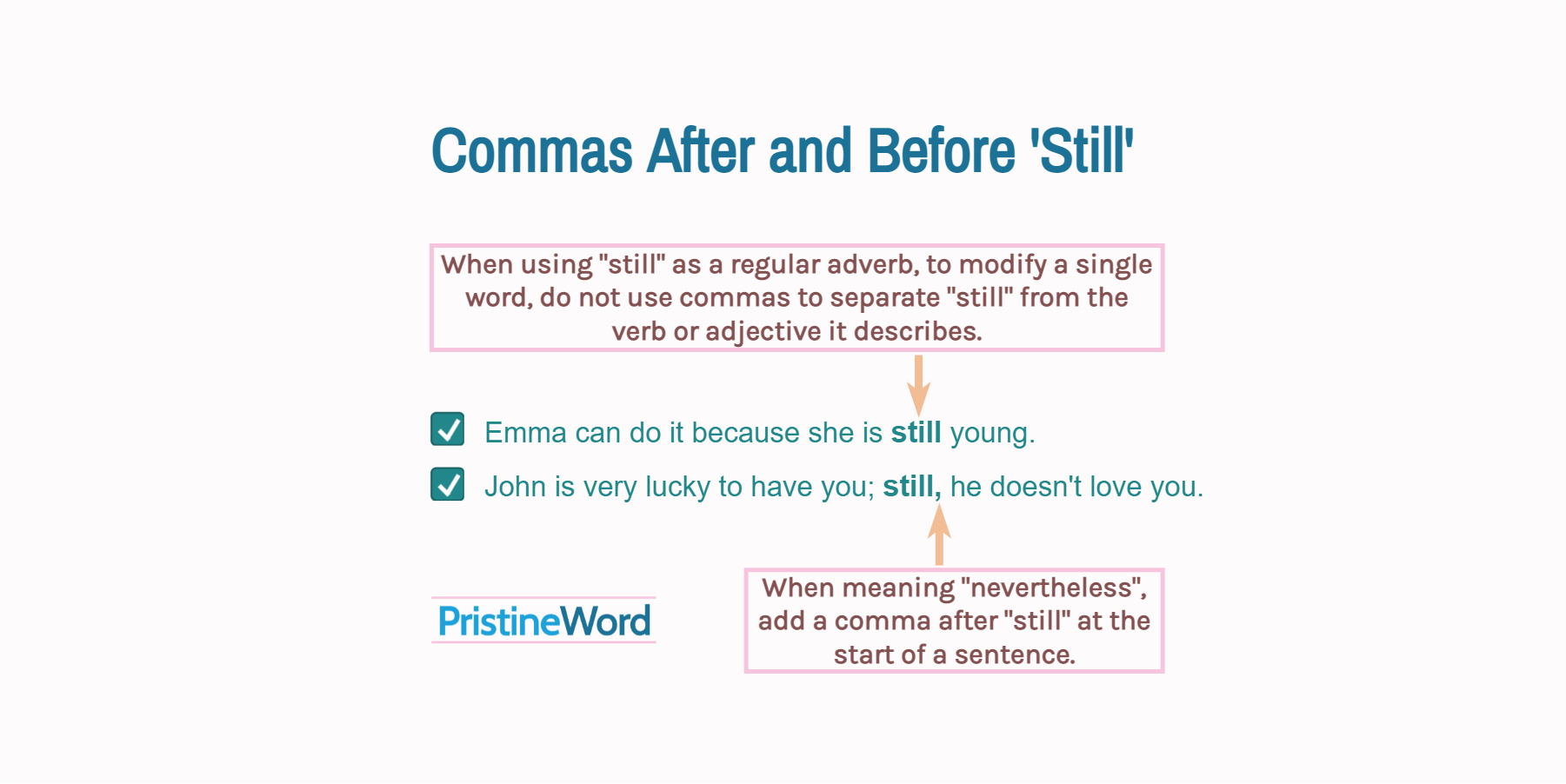When meaning "nevertheless", add a comma after "still" at the start of a sentence or clause. When using "still" as a regular adverb, to modify a single word, do not use commas to separate "still" from the verb or adjective it describes.
When using "still" as a regular adverb, to modify a single word, do not use commas to separate "still" from the verb or adjective it describes.
Emma can do it because she is still young.
Emma can do it because she is, still young.
When meaning "nevertheless", add a comma after "still" at the start of a sentence or clause.
John is very lucky to have you; still, he doesn't love you.
But the comma is optional in mid-sentence if the interruption of the flow is slight.
Those who take the greatest care still make mistakes.
1. How to Use 'Still'
As an adverb, "still" is typically used:
- to indicate that something is quiet or has no motion (e.g., "Sit still.")
- to express or emphasize that something is continuing (e.g., "I still have a cold.")
- to describe a situation that should have happened, but it has not happened (e.g., "I still haven't found a job.")
- as a synonym of "nevertheless" to show contrast and surprise (e.g., "We studied English punctuation, and sometimes we are still not certain when to use a comma.")
2. 'Still' as a Regular Adverb
In general, do not use commas to separate regular adverbs of time from the verb, adjective, or adverb they modify.
Be still while I take your blood pressure.
Be still, while I take your blood pressure.
In the previous sentence, "still" modifies a single word ("be"), so no comma.
The following sentence shows how to use "still" to express that something is continuing.
I still want to be with you.
Again, no comma before or after "still" because it describes a single word ("want" in the example above).
3. 'Still' as a Conjunctive Adverb
Use a comma after "still" at the start of a sentence when meaning "nevertheless" or "in spite of that".
You may want to buy a new vehicle. Still, you don't have to. You can repair your own car.
In sentences like these, "still" is a conjunctive adverb, which help us connect two thoughts.
I've been studying German for three years; still, I cannot understand it well.
The comma after "still" signals that the adverb modifies the whole clause or sentence that follows.
We've been working hard on the software development project. Still, the program does not work correctly.
At the beginning of a sentence, "still" should be preceded by a semicolon or a period.
Olivia is smart and creative; still, she can't solve the puzzle.
We can also use "still" in the middle or at the end of a sentence to mean "nevertheless". In this case, we use commas to stress an interruption.
Peter didn't play well last Sunday, but he is, still, the best player of the team.
But no comma is necessary if the interruption is slight.
It seems crazy, but you still can do it.
You may be angry at her, but she's still your sister.

